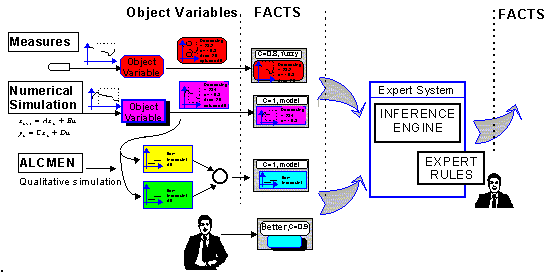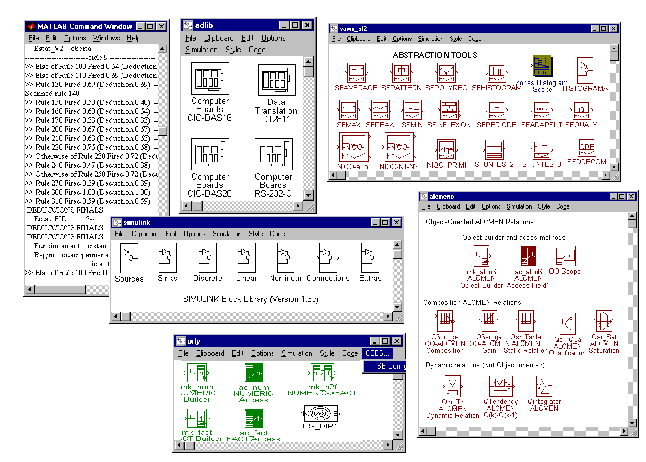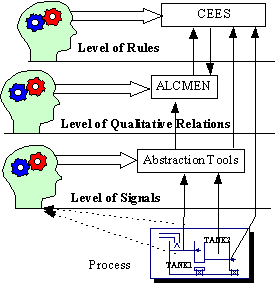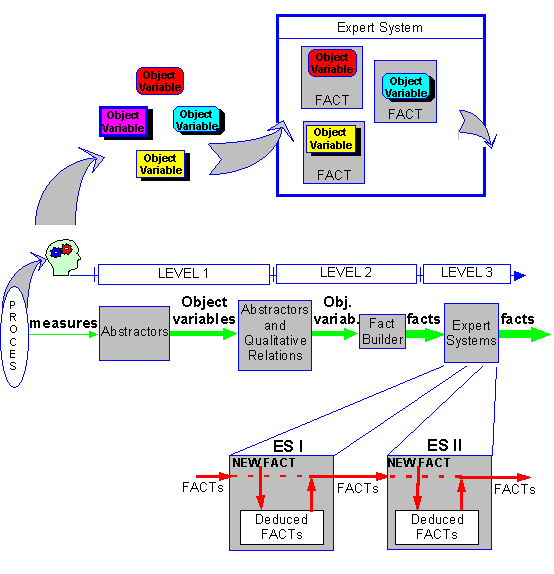
Fig. .29 Mechanisms for obtaining significant information involved in expert reasoning.
Object-variables, embedding data and methods, implementing numeric to qualitative interfaces, based on abstraction tools, for dealing with ALCMEN qualitative relations and CEES expert rules, have been implemented by means of Simulink block-based graphical representation. As a result, MATLAB/Simulink, the numeric CACSD framework, has been improved to support expert supervisory strategies design becoming a CASSD framework.
Architecture and tools.
The previous described tools, abstractors, ALCMEN and SimCEES, have been implemented in Simulink under an object oriented approach to facilitate the task of designing and testing supervisory structures, based on expert knowledge [Melendez et al., 1996b][Melendez et al., 1997a]. Object-variables have been defined to encapsulate information from process variables at different levels of abstraction. Then, abstractors also called abstraction tools, are encapsulated in object-variables to obtain a significant information from those variables related to the process. This information is encapsulated using both numerical and qualitative representations in the object-variables. This data can be directly supplied to a modular ES, SimCEES, by building facts that join all the information encapsulated in object-variables and subjective appreciation about certainty of this information with methods needed for the inference engine of ES. Parameters are supplied using a dialogue window.

Fig. 5.29 shows how those tools are involved in the procedure of obtaining significant information to be supplied to the ES. The heterogeneous kind of information merged to reason about complex systems, needs the object-oriented approach to be used as integration mechanism. In this case, it has been used in the representation of information flow (object-variables and facts) and also to build a modular ES able to deal with this encapsulated information.

Fig. .30 Set of Simulink ToolBoxes
of the proposed CASSD framework.
Abstraction tools, ALCMEN and CEES
are available.
Knowledge representation.
Processing and administration of expert knowledge requires of knowledge formalising and structuring. Rule-based programming is not the only technique used with this goal, within artificially intelligent programs, but nowadays, it is the more adequate technique for us to directly codify expertise. In spite of this, some other classical formalism are more or less present in the proposed framework taking in account the particular point of view of process supervision domain. Procedures typically used to represent objects and their relationship are used to represent process variables :

Fig. .31 SimCEES rules
The modular conception of all those tools presented to help supervisory
systems design, supported by Simulink blocks, simplifies modular design
of reasoning systems. Simplicity and modularity, which combines quantitative
and qualitative knowledge, are important advantages when building on-line
reasoning systems that are embedded in conventional applications. According
to the degree of abstraction of knowledge about process variables the tools
presented in the previous sections are especially conceived to assist in
three hierarchical levels (Fig. 5.32):

Fig. .32 Levels of abstraction
Each level is able to deal with significant information coming from equal and inferior levels (See "Fig. 5.32") . The mechanisms used in the representation of knowledge at each level are associated with the respective tools, described in previous subsections. These mechanisms, are always implemented using object-oriented programming and encapsulated as blocks in a graphical representation supported by the Simulink graphical user interface. Knowledge modularisation and encapsulation is represented in Fig. 5.33.

Fig. .33 Encapsulation of knowledge
in object-variables and facts
related to the tools used with this
purpose in each level.
Row numerical data coming from process (measures or estimations) are encapsulated into object-variables together with abstraction tools used to obtain qualitative descriptions of process variables based on significant information. Qualitative description of those signals are stored in temporal windows to be used in reasoning task by other blocks. Finally they, can be supplied to ES as facts encapsulating additional information.